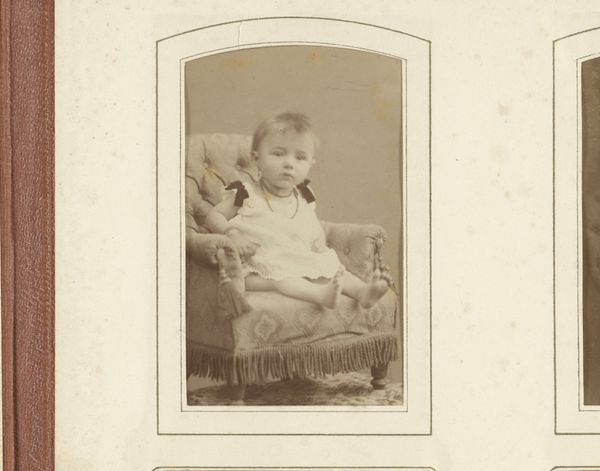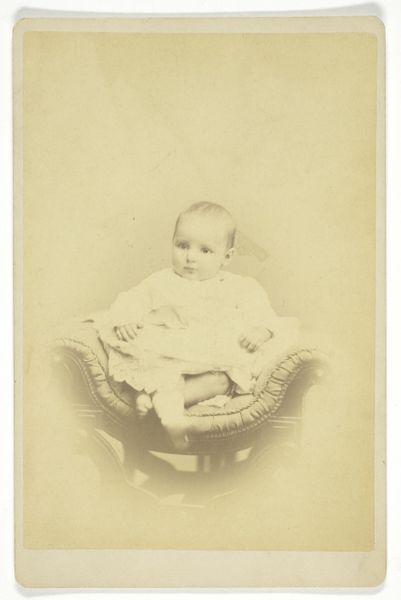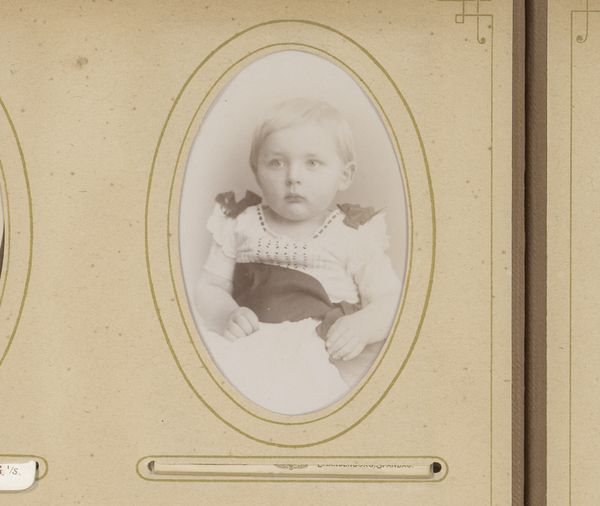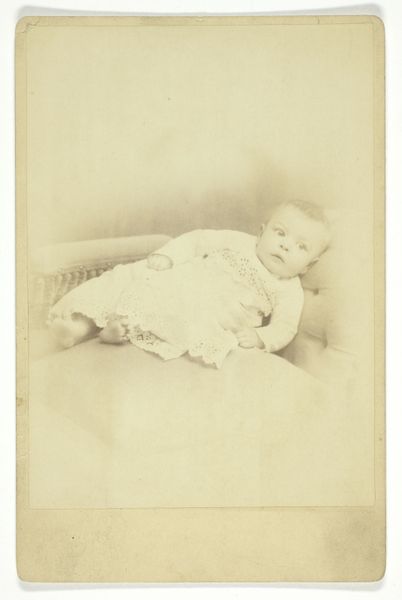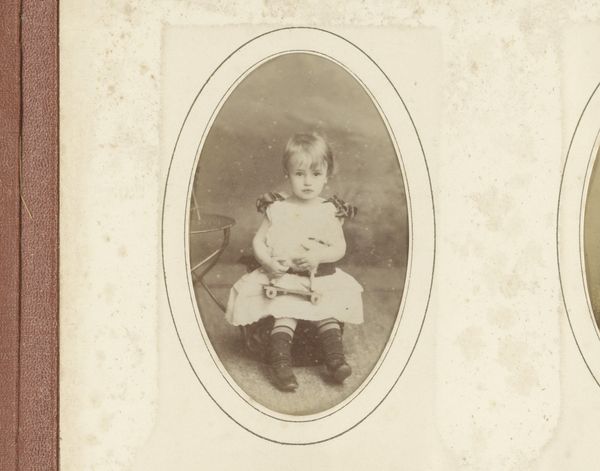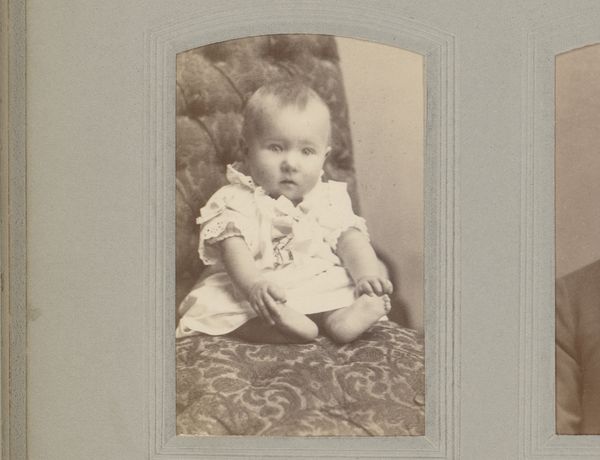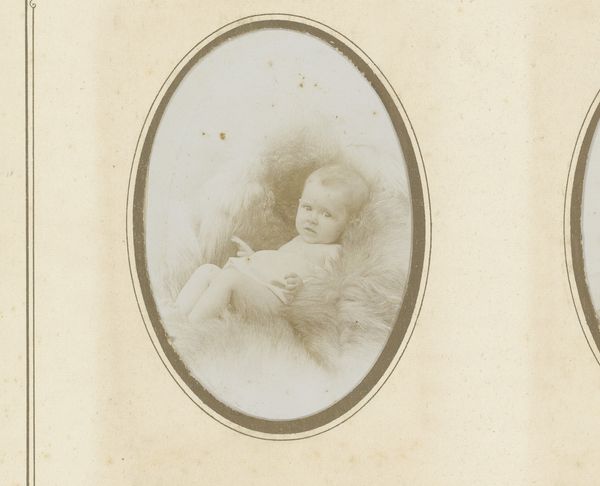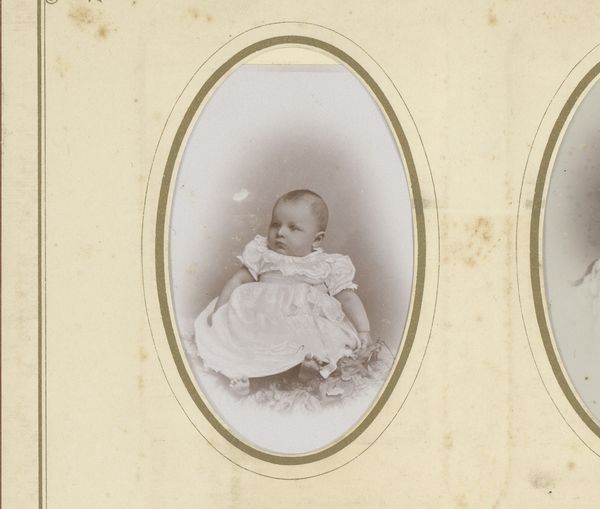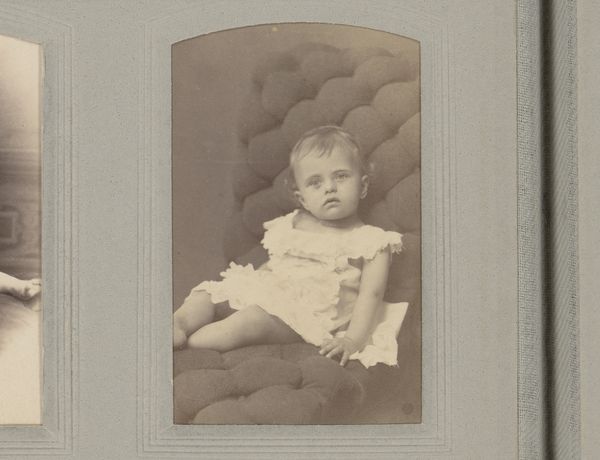
Portret van een zittend meisje met oorbellen en halsketting, aangeduid als Johanna 1874
0:00
0:00
photography, gelatin-silver-print, albumen-print
#
portrait
#
photography
#
gelatin-silver-print
#
albumen-print
Dimensions: height 83 mm, width 52 mm
Copyright: Rijks Museum: Open Domain
Curator: Here we see a sepia-toned portrait, “Portret van een zittend meisje met oorbellen en halsketting, aangeduid als Johanna"—or, "Portrait of a seated girl with earrings and necklace, referred to as Johanna.” The portrait, made using gelatin-silver print or albumen print photography, dates to 1874 and is attributed to Georges Penabert. Editor: She looks exhausted, almost like a tiny adult burdened by the world! The composition has her slouched on that plush sofa, yet she is wearing a decorative necklace. I find myself wondering if she was happy about dressing up and sitting still for the shot. Curator: It's a common theme in early photography to capture a sense of timelessness, even for children. Formal portraiture was very much about projecting status and permanence. Looking at the conventions of that time, dress-up for children was more common. Editor: It makes me think about representation, who had access to being photographed, and how those images reinforced certain class structures. Photography had, and still has, a potent ability to influence social and political hierarchies. The girl might come from money, to be able to take a photo in the first place. Also, it appears that the artist or client sought to give this girl an elegant air through her attire, perhaps hinting that the portrait serves to cement status within her social milieu. Curator: Precisely! It is critical to contextualize this image within the development and social use of early photography. Photography was rapidly transforming from a niche process to a social norm in documenting identity and lineage. A portrait such as this one allowed a growing bourgeois class to publicly claim power and position. Editor: Thinking of Johanna and girls like her makes me appreciate the work of photographers documenting everyday life. Those raw, authentic moments are such an essential counterbalance. Do you get the feeling, in terms of subject position, that the child has little to no agency here? Curator: In some ways, yes. The aesthetics of the time did not celebrate childhood spontaneity in the same way we value it today. Instead, the photograph underscores the prevailing cultural notions of propriety. Editor: As an artwork, this image inspires many contemporary debates about visibility and the complex politics behind visual narratives, which reminds us of how much has changed, but also what persists. Curator: Indeed. Images like this urge us to think critically about representation and how art both reflects and shapes the societies from which they come.
Comments
No comments
Be the first to comment and join the conversation on the ultimate creative platform.



